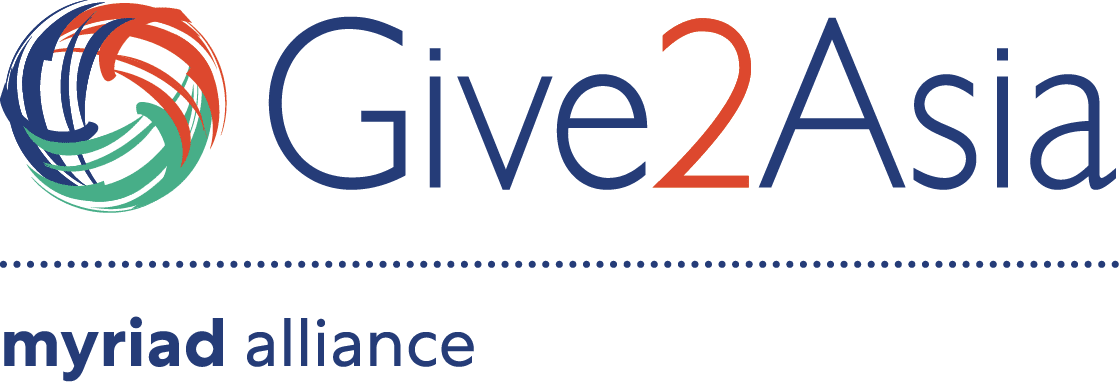Being that Give2Asia works with a slew of highly qualified field advisors in 25 locations, we will be creating profile pieces to provide on-the-ground insights into each local scene and engage with this critical part of our workforce. We continue our spotlight series with Suresh Tamang, our field advisor in Nepal.
As Field Advisor for Nepal, you are a valuable asset in many projects that connect to the social sector as well as ongoing efforts in earthquake recovery work. Please tell us a little bit about yourself.
I was born and raised in Nepal. I have worked with nonprofits since 1994 and I have spent a couple of years in community development and health research. I went to Hawaii for my Ph.D. and returned to Nepal in June 2016. After coming here for a few years, I have been involved with multiple assignments to assisted NGOs with projects.
What are your responsibilities as a field advisor for Give2Asia?
Among other responsibilities, I facilitate grants administration for all grants in Nepal. Like other field advisors, I am also responsible for the facilitation of the due diligence process for new partners and for renewals. I review new proposals, budgets, and documents to ensure they are complete. I also communicate with grantees to verify or clarify information. With that said, I am enjoying the Give2Asia work because it is flexible and because all the team I work with across the region and in HQ are very cooperative.
Where do you live?
I currently live in Lalitpur, one of the 3 metro cities in the capital of Nepal. I definitely like my country, but there are issues that I encounter every day. There are a lot of new buildings and road constructions. Traffic is very packed, and we do not have efficient transportation yet, so it gets a little crowded.
What languages do you speak?
I speak at least four or five languages, including Nepalese, Hindi/Urdu, English, Tamang (my native language) and basic Tibetan.
What are some memorable experiences that you have encountered as a field advisor?
As soon as I joined, I found it interesting to get an agreement signed, renew Due Diligence, and chase down overdue reports. I visited one of the grantees who had a huge disaster resilient structure, but the partner was not able to produce a simple completion report. It shows how administrative work can be a bigger challenge than we often realize. While someone had recommended that project, a foreign company delivered all the construction materials (pre-fabricated). It took three months to fit and install all of the two-story multiple rooms in the school building, all of which was completed by a team of foreign technicians. The project was a big success but they do not even know the exact financial status due to its complicated division of workforce.
Please tell us about your favorite Give2Asia project and why.
There are a variety of projects currently ongoing in Nepal that I like, from heritage conservation to disaster prevention and training. It is important to support and rehabilitate the mental health needs of people who have been severely impacted by the earthquake. Health is basic human right and it important to understand that it is not only a biological phenomenon, but more of a bio-psycho-social and even spiritual one these days. We need to invest in psycho-social and behavioral health, and some of the Give2Asia projects do a great job in this field.
What are some challenges you have experienced as the Field Advisor in Nepal, and how did you overcome them?
Since I joined Give2Asia, aside from setting up new contract agreements and DD renewals, I have been working hard to close the loop on various overdue reports for the high number of grantee partners and projects we supported after the 2015 earthquake. I am constantly following-up with them by phone, email and sometimes in-person meetings. Another challenge is that many grantee partners are based in Kathmandu, while some of the projects are implemented in different parts of the country. I have not yet been able to visit the project sites and interact with beneficiaries and communities.
How does the social sector in Nepal compare/contrast to those in other places in Asia that you have visited?
South Asia overall has similar contexts and situations. They are more fatalistic and donor-dependent, and if we compare them with East Asia we see differences in terms of willingness to donate and internal governance and transparency. A majority of the people in this region are still living under poverty while a few elites are very corrupt, often connected to them not wanting to contribute to social services or donate money for the welfare of others.
How do you see the social sector in Nepal Changing in the next 10 years?
This is a million-dollar question. I have been in the social sector for the last two decades. I can foresee that it will soon be in a better position than its current state because the government is trying to regulate and bring more policies and programs that will promote the social sector. Because the government is not able to do everything by themselves, they have to realize that nonprofits and social sectors are complimenting. As the country’s economy is changing, people are getting more educated and exposed to issues of the social sector. If corruption goes down and governance and social accountability increase, Nepal will do great in the coming decade.
What are the greatest challenges nonprofits in Nepal face?
After the 1990s, a lot of non-profits boomed in Nepal: there are over 40,000 NGOs registered and the majority are active. However, the government of Nepal does not realize that NGOs are complementing their efforts. Instead, they think of them as competitors and threats. Non-profits are regulated more and more each year. In addition, many NGOs themselves have issues of internal corruption, irregularities, nepotism and lacking transparency. Both the government and NGOs need to be held more accountable so that programs can have the best impact.
Ever since the Nepal Earthquake, what are some observations that you have made about the recovery process?
The recovery process is taking time, and it is especially slow on the government’s side. Less than 50% of survivors are resettled so far due to some internal conflicts and lack of adequate capacity, despite the fact that many non-profits and private sector donors have been supporting the process. Many people are still living under temporary shelters, while education, health, and other services have not been well restored yet. Some people’s lifestyle, eating habits and even expectations from donors have changed.
What is a unique aspect of the communities in Nepal that you want Give2Asia’s community of donors and grantees to know about?
Local people are very hardworking, resilient and honest, while some elite groups including the so-called educated people who run the most of NGOs are doing their business in the name of the social sector and development. So, Give2Asia’s system of focusing on donations directly to marginalized local groups is the best way of avoiding the corrupt elites (middlemen) and reaching actual beneficiaries and impacting the most lives.
Lightning Round…
How do you fill the rest of your time? What do you do for fun?
I work in my small garden, help in the kitchen, and spend time with my family. I have a daughter who has already gone to college in the U.S and I also have a little three-year-old boy, a wife, and other family members. For fun, I enjoy traveling and photography.
What are some monuments/sites in Nepal (or in other parts of Asia) that you enjoyed seeing and why?
There are many historical sites in Nepal such as Bouddha, Swoyambhu (in the capital) and Lumbini (Buddha’s Birthplace in South West Nepal), which are also listed as world heritage sites. I have visited Thailand, Japan, and China many years ago. Besides the tourist attractions and promotion of cultures, I found that these places are well maintained and preserved. They are used for education and other social purposes. The Golden Temple in Kyoto, Tokyo Tower, and Asakusa in the middle of Tokyo city, Emerald Buddha in Bangkok, Summer Palace, Temple of Heaven in Beijing, and the Shanghai Tower symbolize the culture, history and other aspects of social lives in the region.
What is your favorite local food (in Nepal) and how is it cooked?
I prefer locally produced foods, with organic products and homemade food. One example is the dhindo (we call it Chhyamba), a kind of porridge made of wheat or corn/millet flour in boiled water. I also like the Momo, which is the localized version of a dumpling or dim sum. It is small dough balls wrapped over meat and mixed vegetables. You have to steam it to cook it. At home, my family and I cook most of the time and try to plant local, homegrown products because I am aware that there are pesticides and GMOs. We still have some local organic produce, but it is expensive.
What advice would you give your past self?
Working with non-profits for over two decades, I have realized that there is so much we can do for our communities to make a better place to live, but we also know civic engagement is crucial. We always work with the people, not for people. Let us try to best utilize every dollar our donors give. Let us do small but impactful projects to support those whose lives can be impacted by each a dollar. Similarly, research and evaluation are also important for evidence-based policy change and social transformation. Let us not solely work in providing grants, training or organizing campaigns, but in making a big impact that transforms communities.




